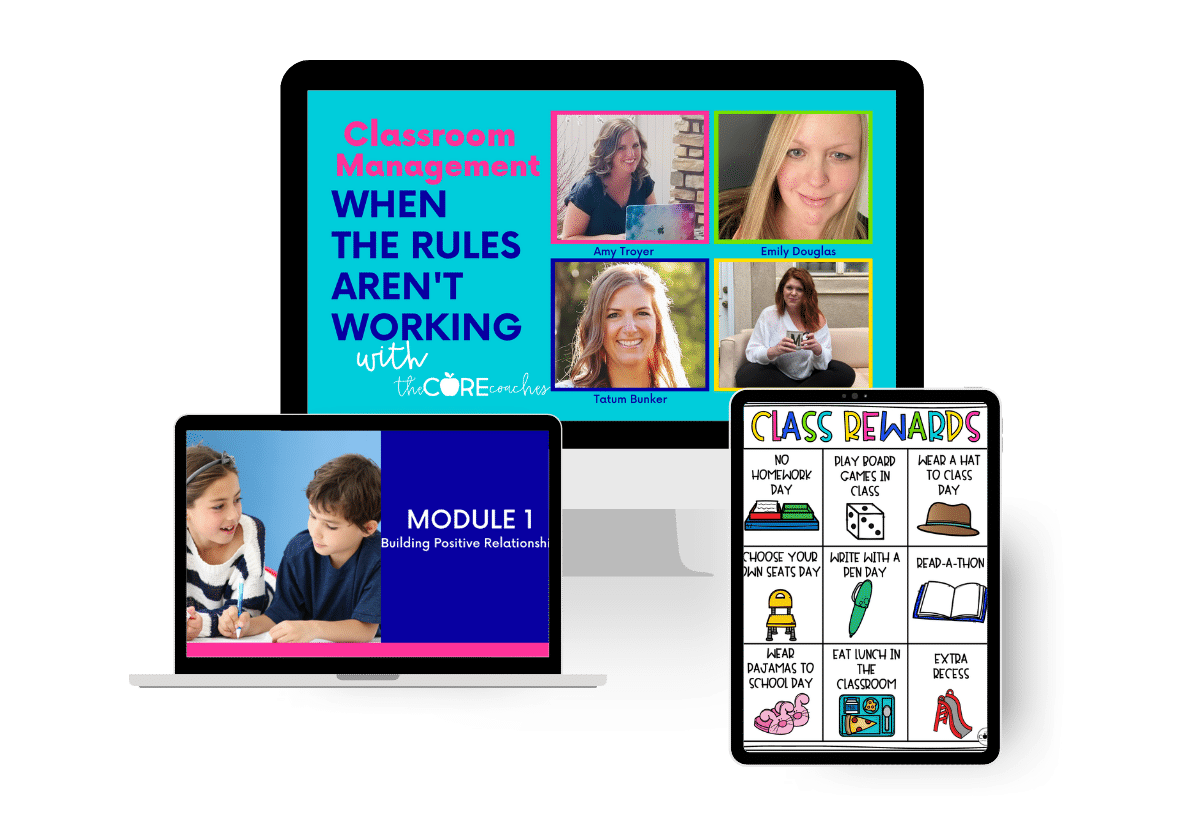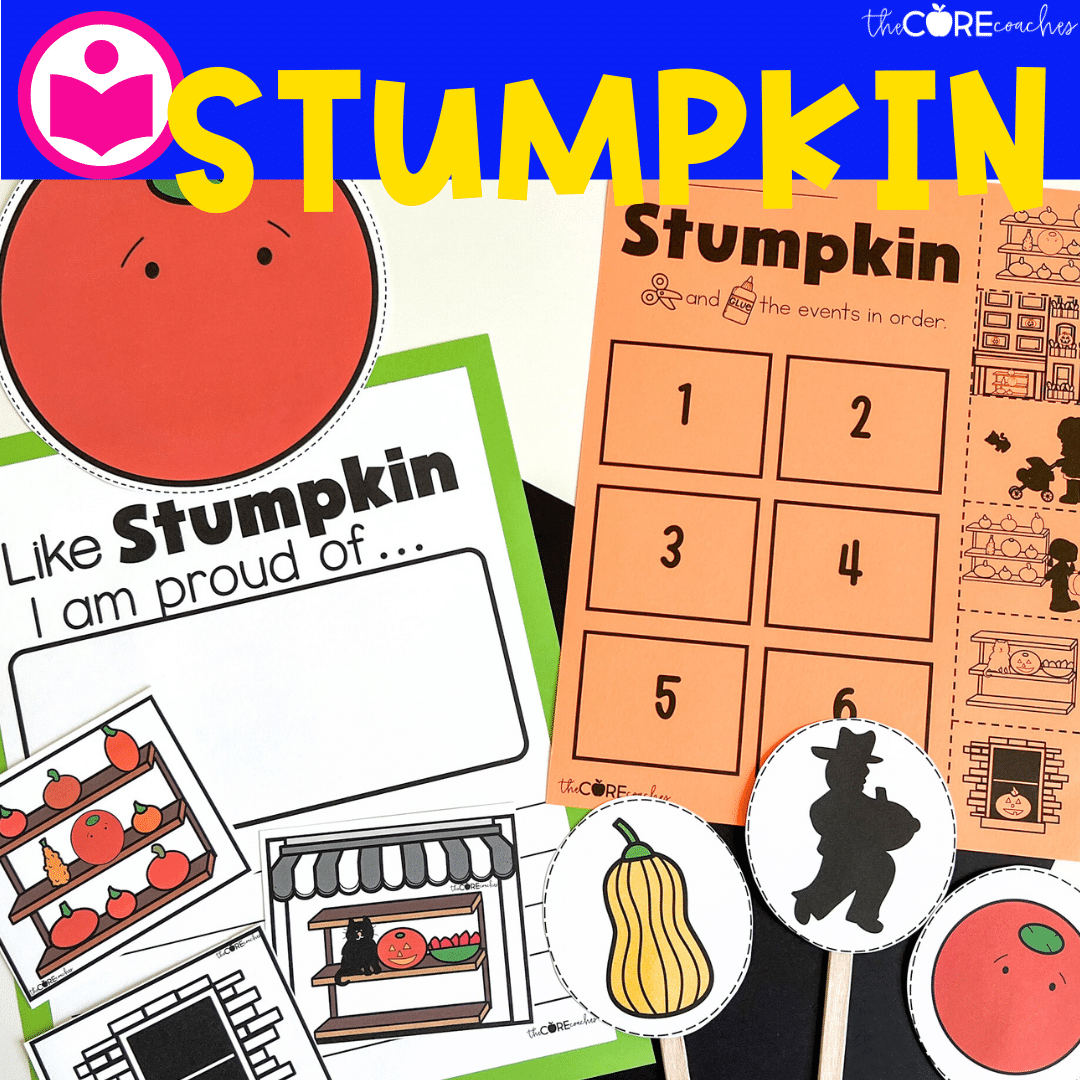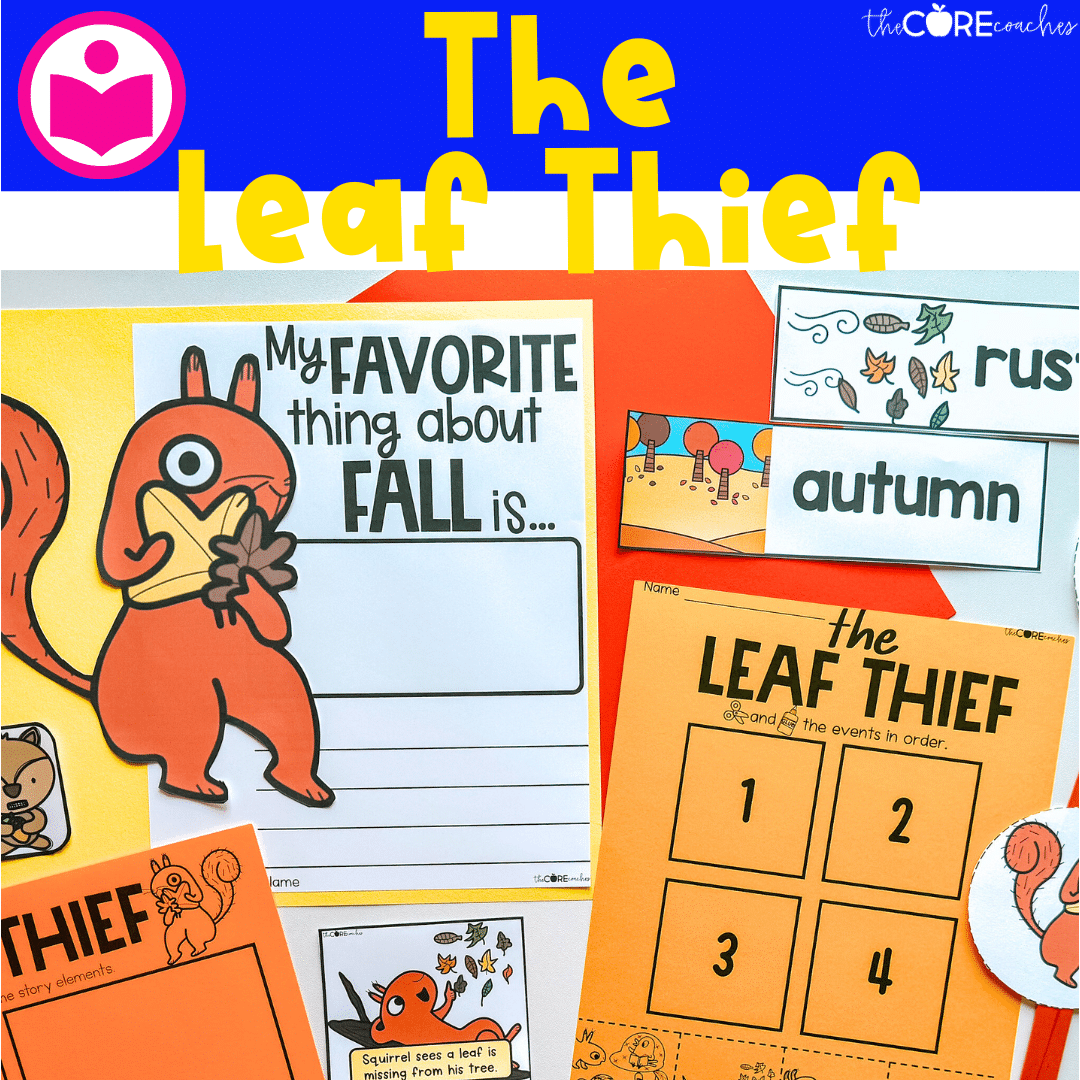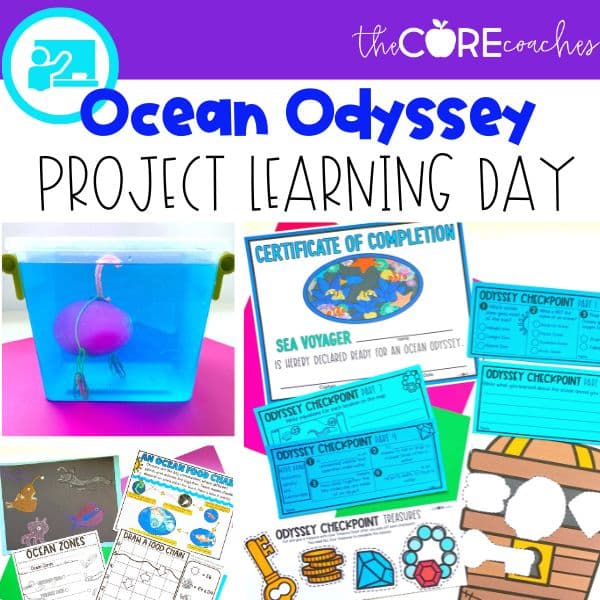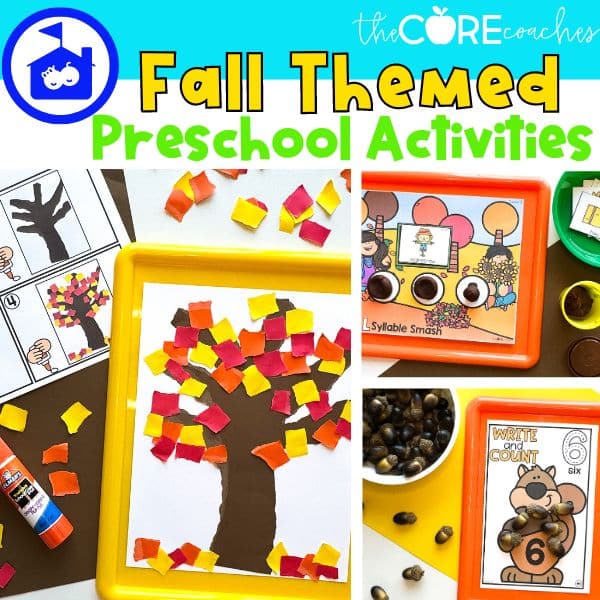Your download is on it's way...
Check Your Email
Thank you for downloading our re-usable lesson plan. This easy-to-use template will guide you through any lesson plan or classroom activity. It’s super simple, yet highly engaging. Now that we think about it…. it’s pretty similar to our lesson plans!
CHECK EMAIL
We’ve just emailed you your free downloadable template. In your inbox you’ll see an email from The Core Coaches, open that and click the button to ‘confirm & download’.
Add to ContactS
We give away FREEBIES on the reg–u–lar! Which is why, you don’t want to miss a single email. While you’re in your email account, add [email protected] to your contact list!
Lesson Planning
Are you ready to continue reading The Anatomy of an Elementary Lesson Plan? Great scroll down to start the article.
Elementary Lesson Planning
In this article, we breakdown our lesson planning process from teaching strategies to keep your students engaged through understanding the elements of a lesson, the best activities based on lesson plan type, our favorite easy lesson plans and read aloud lesson plan ideas.
TABLE OF CONTENTS
Part I. Strategies to Engage Your Students

7 CORE TEACHING STRATEGIES for Engagement
Prior to developing your lesson plan, consider what teaching and classroom strategies will work best with the topic. By pairing the right teaching strategies in your lesson plan will improve your chances of successful learning.1. POSITIVE LEARNING ENVIRONMENT
Students optimize their learning potential within inviting, positive learning environments. Set routines and procedures in your classroom that hold students to high expectations. Build caring student/teacher relationships and a supportive classroom community to provide students with a sense of consistency and safety. In today’s schools, the success of our students’ learning relies not only on providing academics, but also a safe emotional environment. Practicing mindfulness in the classroom gives students permission to pause, breathe, and take a break in the classroom. Providing mindful breaks is a wonderful way to implement calming, thoughtful, mindful activities to help your students prepare to learn and focus throughout the school day. Mindful breaks can include: journaling, movement, energizers, breathing, or practicing affirmations.2. STUDENT ENGAGEMENT
Our definition of student engagement goes beyond maintaining students’ compliant, on-task behavior. To create classroom engagement, you should foster the students’ ability to be engaged and invested in their own learning at behavioral, emotional, and cognitive levels. For example, you may consider a regular morning meetings. As a teacher, greeting your students in the morning is a simple practice that will have a huge impact. Greeting students at the door makes them feel welcome and safe the moment they arrive at school. (See Morning Meeting ideas) It also helps build individual relationships with each student and sets a positive tone for the day. A simple greeting with students can turn into a quick chit-chat about how students are feeling or any news they want to share with you. This is a great way to build strong connections with each student. You may also like: Student-Led Morning Meetings3. CLASSROOM MANAGEMENT
Student engagement and classroom management go hand in hand. Students who are engaged in their learning tend to have fewer management issues. Use effective classroom management tips techniques to help sustain an orderly classroom environment, facilitate meaningful academic learning, and support social emotional growth.4. VARIED INSTRUCTION
Students learn in a variety of ways. Just as they need a balanced diet, they also need a balance of instructional delivery methods. Provide a variety of instructional strategies to deliver content. Include opportunities for students to collaborate with peers, to use visual, auditory, and kinesthetic channels, and to include reading, writing, and speaking as a basis for their sense-making. Above all, instruction should be interactive, meaning students provide visible evidence throughout the instruction that shows they are doing the learning.5. REPEATED EXPOSURE
Max Bell, of Everyday Mathematics, said that if teachers give children an opportunity to forget something, they will. Repeated exposures to content will snowball over time and help students retain information for long-term learning. Within a lesson, across a unit, and throughout a school-year, revisit topics repeatedly, using a variety of6. APPROPRIATE RIGOR
Rigor and difficulty are not synonymous. Rigorous activities require students to think deeply rather than memorize or recall information. Include academically rigorous learning experiences that challenge students to develop and utilize critical thinking skills that can be applied in different contexts throughout their lives.7. AUTHENTIC LEARNING
Authentic learning experiences give students a relevant context for their learning where they apply newly acquired skills in real-world applications. This is often accomplished as learning processes and products span across more than one discipline. Plan meaningful learning activities that require students to use critical and creative thinking skills outside of the classroom context. By focusing on these 7 essential strategies, teachers can effectively supply core content that includes what students should learn and why they should learn it, while also supporting students in the process of how to learn, which foster life-long skills for success.PART II. 4 KEY ELEMENTS OF LESSON PLAN

THE 4 KEY ELEMENTS OF A LESSON PLAN
These four key elements should always be present in an effective elementary lesson plan. We believe the quality of any lesson plan truly matters as it directly affects the teacher’s efficiency in delivering the content. It also affects how deeply the students will learn the content. Teachers can greatly improve their lesson planning skills by targeting these four key elements.1. Lesson Objective or Learning Target
First, it is important to ask- What is the goal of this specific lesson? Consider what students will know and be able to do by the end of the lesson. When planning a lesson, write down the goal as the lesson objective or learning target in student-friendly terminology. Then be sure to share the objective or target with students at the beginning of the lesson and refer back to it throughout the lesson.2. Anticipatory Set
How will you set the stage for the learning that will occur? The anticipatory set, sometimes referred to as the lesson hook, is a short activity aligned with the lesson objective that captures students’ interest or primes their brains to recall prior knowledge related to the lesson.3. Gradual Release of Responsibility
How will you provide appropriately scaffolded instruction that guides students toward independence and mastery of the skill or content? One easy way we like to encompass this gradual release is through the “I Do, We Do, You Do” model. I Do- ‘Direct Instruction’ In this portion of the lesson, the teacher models and provides direct instruction for the students. The teacher explicitly explains what students need to know, showing them exactly how to do whatever is required to successfully obtain the objective or learning target. We Do- ‘Scaffolded Student Practice’ This is a crucial step in the lesson and should not be skipped! The teacher and students practice the steps, tasks or skills together. During this time, the teacher gradually releases more and more responsibility for learning to the students. The teacher also provides feedback along the way that directs students to refer back to the objective or learning target. You Do- ‘Demonstration of Learning’ In this portion of the lesson, students perform the steps, task or skill independently to demonstrate their level of mastery towards the lesson objective or learning target. The teacher monitors mastery, checks for understanding, and continues to offer feedback to students.4. Closure
Don’t leave a lesson hanging! Consider how you will bring closure to the lesson. How will you wrap up the lesson so students are given a chance to revisit the learning target or lesson objective, consolidate learning, and/or make meaning of the work they have just encountered? The students are the ones doing this thinking while the teacher takes on a facilitative role. The lesson closure also provides a good opportunity to collect formative assessment data that informs the teacher in making instructional decisions about upcoming lessons.Part III. Four Key Elements of a Lesson Plan


THE 4 KEY ELEMENTS OF A LESSON PLAN
Four key elements should always be present in an effective elementary lesson plan. We believe the quality of any lesson plan truly matters as it directly affects the teacher’s efficiency in delivering the content. It also affects how deeply the students will learn the content. Teachers can greatly improve their lesson planning skills by targeting these four key elements.
1. Lesson Objective or Learning Target
First, it is important to ask- What is the goal of this specific lesson? Consider what students will know and be able to do by the end of the lesson. When planning a lesson, write down the goal as the lesson objective or learning target in student-friendly terminology. Then be sure to share the objective or target with students at the beginning of the lesson and refer back to it throughout the lesson.
2. Anticipatory Set
How will you set the stage for the learning that will occur? The anticipatory set, sometimes referred to as the lesson hook, is a short activity aligned with the lesson objective that captures students’ interest or primes their brains to recall prior knowledge related to the lesson.
3. Gradual Release of Responsibility
How will you provide appropriately scaffolded instruction that guides students toward independence and mastery of the skill or content? One easy way we like to encompass this gradual release is through the “I Do, We Do, You Do” model.
I Do- ‘Direct Instruction’
In this portion of the lesson, the teacher models and provides direct instruction for the students. The teacher explicitly explains what students need to know, showing them exactly how to do whatever is required to successfully obtain the objective or learning target.
We Do- ‘Scaffolded Student Practice’
This is a crucial step in the lesson and should not be skipped! The teacher and students practice the steps, tasks or skills together. During this time, the teacher gradually releases more and more responsibility for learning to the students. The teacher also provides feedback along the way that directs students to refer back to the objective or learning target.
You Do- ‘Demonstration of Learning’
In this portion of the lesson, students perform the steps, task or skill independently to demonstrate their level of mastery towards the lesson objective or learning target. The teacher monitors mastery, checks for understanding, and continues to offer feedback to students.
4. Closure
Don’t leave a lesson hanging! Consider how you will bring closure to the lesson. How will you wrap up the lesson so students are given a chance to revisit the learning target or lesson objective, consolidate learning, and/or make meaning of the work they have just encountered? The students are the ones doing this thinking while the teacher takes on a facilitative role. The lesson closure also provides a good opportunity to collect formative assessment data that informs the teacher in making instructional decisions about upcoming lessons.

Part IV. Eight Tips for Easy An Lesson Plan

8 TIPS FOR AN EASY LESSON PLAN
Here are 8 top tips to write simple and easy lesson plans. Lesson planning can save precious time and energy… possibly even giving teachers their nights and weekends back!
- Work backwards. Plan with the end in mind. If you find yourself planning day-to-day, make an initial investment of time upfront to create pacing guides or unit overviews that include desired student outcomes. Then use those guides as a reference to bring focus to your lesson planning sessions.
- Don’t start from scratch. Utilize available content. There is no need to recreate the wheel for every lesson. Use the resources that are already available to you. Strategically choose the best instructional strategies and resources from provided curricular materials. Also take advantage of access to great digital content like videos, webquests, OER materials, virtual field trips, etc.
- Be reflective. Use what has worked before. For any lessons or topics you’ve had a chance to teach previously, be reflective on what worked and what didn’t. Keep the lesson elements and instructional strategies that were most impactful for students and tweak the rest.
- Build structure. Set instructional routines. Put a few key instructional routines in place at the beginning of the year that maintain high expectations for student learning, and ones which you can plan to use over and over again. When it’s time to plan a lesson, simply choose a routine and insert the lesson content. Examples of effective instructional routines: partner talk, graphic organizers or guided notes, written response, interactive notebooks, collaborative grouping, learning stations, etc.
- Join forces. Collaborate with colleagues. If you find that your grade level team will be teaching the same lesson, it might be worthwhile to divide and conquer in the planning. Take turns creating the lesson materials, copies, differentiation strategies, instructional slides, etc. to share amongst your colleagues.
- Draw the line. Keep it Simple. The internet provides access to millions of lesson ideas for any given topic, but that doesn’t mean you need to spend hours sifting through it all. Over-the-top elaboration isn’t necessary to make lessons meaningful. In fact, that kind of fun can actually distract students from the type of cognitive engagement you are hoping for. Instead, use a lesson format that works for you and use it often. When lesson planning, limit the amount of time you will allow yourself to spend searching the internet.
- Take stock. Gather timely data. Gather relevant data through ongoing formative assessments to better understand student performance and mastery. Because the data is timely, it is important not to plan too far ahead. Use the current data to inform instructional decisions about subsequent lessons and focus your planning on the steps needed to move students closer to the goal.
- Have a plan. Don’t over plan. Include a few relevant ‘fast finisher’ activities to accompany each lesson so you will feel prepared. But, don’t waste time over-planning. Recognize that spontaneity is an important teaching tool too. Accept the fact that there are many paths to reach a single goal. Be willing to change directions as you adjust to the needs of your students in the moment.
Part V. 8 Tips for Easy Lesson Plans
IDEAS FOR ENGAGING LESSON PLANS
Are you tired of your same old lesson plans? Do you feel like you are in a rut? If so, it’s likely your students are bored and disengaged as well. The more engaged students are in the lesson, the more likely they will learn the information and follow classroom expectations. Engaged students show up excited to learn, eager to participate, and ready to demonstrate a positive attitude towards learning.
Encourage Students Do the Work Skills
Research shows that students whose teachers spend too much time talking are less likely to be engaged during classroom instruction. The most engaging lessons involve less teacher talk and more student talk. As you plan for your lessons, ask yourself, “Who is doing most of the work?”
Here are some strategies to help students talk more and DO the work:
Help Students Master Speaking and Listening Skills
Before you are ready to incorporate more student talk into your lessons, familiarize yourself with the most overlooked learning standards- Speaking and Listening. Students need to be explicitly taught these speaking and listening skills. They need time to practice and receive feedback to become productive members of conversation. Learn the standards and find ways to incorporate them into your lessons and daily classroom schedule.
Require ALL Students to Respond
Increasing the number of students’ opportunities to respond is essential to increasing student engagement. An opportunity to respond is when a teacher provides an academic opportunity that requires students to actively respond. There are simple strategies that you can incorporate into your instruction immediately.
- Simultaneous Response- Students respond chorally, or with response cards
- Group Response- Students participate in small group cooperative grouping strategies such as jigsaw, socratic seminar, or numbered heads together
- Written Response- students respond with mini white boards or paper
- Action Response- students respond with hand signals, facial expressions, or gestures.
For the most success, mix all types of responses and be unpredictable.
Here are some ideas for engaging lesson plans that are sure to keep your students’ attention.
Start with a focus activity
Add excitement and wonder to the lesson with a fun focus activity. This will strike students’ curiosity and increase engagement for the upcoming topic.
Get students moving
There are lots of ways to get students up and moving while learning. One idea to get students moving is to have students move to different corners of the room during a discussion. Label each corner of the room with the words like “strongly agree,” “agree,” “disagree,” and “strongly disagree.” Then prompt students to use their speaking and listening standards while talking with the other students in their corner about why they chose that option.
Create learning stations
Allowing students to guide themselves through learning stations is another way to mix up your lesson plans. Each station can incorporate a piece of what the teacher normally would explicitly teach standing in front of the class. For example; one station might have an engaging video and another has a text to read. The third might be a photograph or a labeled diagram about the topic. Students visit all of the stations and then come back as a whole class to discuss what they learned while visiting the stations.
Incorporate technology
Kids love technology. When it is used in the classroom students are immediately more engaged and inspired to learn. Make sure technology enhances your lesson, instead of distracting from the content.
Inquiry-based learning
Inquiry-based learning allows students to focus on an open question or problem. This is engaging because there is not just one correct answer to the question. Students will use evidence-based reasoning and creative problem-solving to come to a solution. This gets them thinking critically, building investigations, reaching conclusions, and presenting their findings.
Above all, let students DO the work. Prior to planning an engaging lesson consider your classroom management. Classroom management strategies help you build a structured environment where students can be successful.
Keep in mind that even the most engaging lessons don’t go as planned. Remember to stay flexible and always do what is best for your students.
Part vi. Ideas for Engaging LessonS
READ ALOUD LESSON PLANS
Are you wondering what to include in a read aloud lesson plan? There’s so much that can be included that it might seem overwhelming. Interactive Read-alouds should include text dependent questions, standards-based graphic organizers, and response to text writing activities that meet the standards.
3-Day Lesson Plan Template to Meet the Standards
By spanning read-aloud lessons across three days, teachers have time to incorporate all the necessary components while also conquering the standards.
Before beginning to plan a read aloud lesson, you will need to select a story that is complex enough to revisit over three days. During the 3-day span, you will read the book for a different purpose each day.
Using your read-aloud time to infuse core standards will help you read with a purpose. Most standards are met by asking text dependent questions. You can also incorporate speaking and listening strategies while questioning by having the students discuss the questions with partners. You can learn more about other discussion strategies and accountable talk in the classroom here.
Here are some effective ways to meet core standards during read-aloud lessons:
- Extend the read-aloud over a few days to allow time to comprehend the story more deeply and cover multiple standards
- Read closely by revisiting the text with a different purpose each day
- Ask text dependent questions that require students to refer to the text and provide textual evidence to support their answers
- Include a graphic organizer that reinforces the purpose
- Incorporate a writing component
- Integrate art
What are text dependent questions?
Simply said, text dependent questions are those which can only be answered using evidence from the text. These types of questions are critical in a read-aloud lesson because they require students to read and reread the text in order to answer the question successfully.
To write text dependent questions, you need to consult your ELA comprehension standards. We typically refer to the Common Core ELA Literature and Informational Text standards and use question stems that target standards from each section (Key Ideas and Details, Craft and Structure, and Integration of Knowledge and Ideas).
Text dependent questions should be asked over the course of three days. Questions for the first lesson will focus on key ideas and details from the story. Focus on the craft and structure for the second lesson and the final lesson will focus on integration of knowledge and ideas. You can learn more about how we use text dependent questions here.
Completing Standard Based Graphic Organizers
For each day of the read aloud lesson, students complete a graphic organizer after the focused discussion on text dependent questions. The graphic organizer should cover the same standards as the text dependent questions on each day. For the first lesson graphic organizers should help students focus on key ideas and details of the text, craft and structure is the focus for the second lesson, and graphic organizers that target integration of knowledge and ideas are used during the final lesson.
Wrapping it up with Writing
On the final day of a read aloud lesson, assign a response to text writing activity. This activity should incorporate writing standards in a meaningful way as students are asked to synthesize their learning over the span of the lessons.
We believe a strong classroom community starts the foundation for learning. We are passionate about helping teachers build a positive environment where students thrive. You can find helpful, popular classroom community resources here.
We also believe students are capable of doing hard things with perseverance and a growth mindset. We create rigorous lessons for kids that are carefully scaffolded. We provide teachers helpful, detailed instructions and examples of how to execute all of our lessons with students. You can find in-depth read-aloud lessons and paired text lessons here.
We believe digital resources are absolutely essential for today’s students. We are currently working hard to meet the demand for technology in the classroom. We have combined our expertise in literacy and technology to create digital lesson plans. Check out our most popular resource line Digital Learning Quests.
Part VI. Elementary Teaching & DISTANCE LEARNING
There are three fundamental elements to consider when providing effective distance learning instruction. While these fundamentals are also used during in-person lesson planning, the execution will look different for digital learning.
When creating lesson plans specifically designed for distance learning, it is important to keep these elements and instructional practices in mind. Let’s examine how these key components and related instructional ideas apply to distance learning in elementary classrooms.
Start Our Classroom Management Course Today
